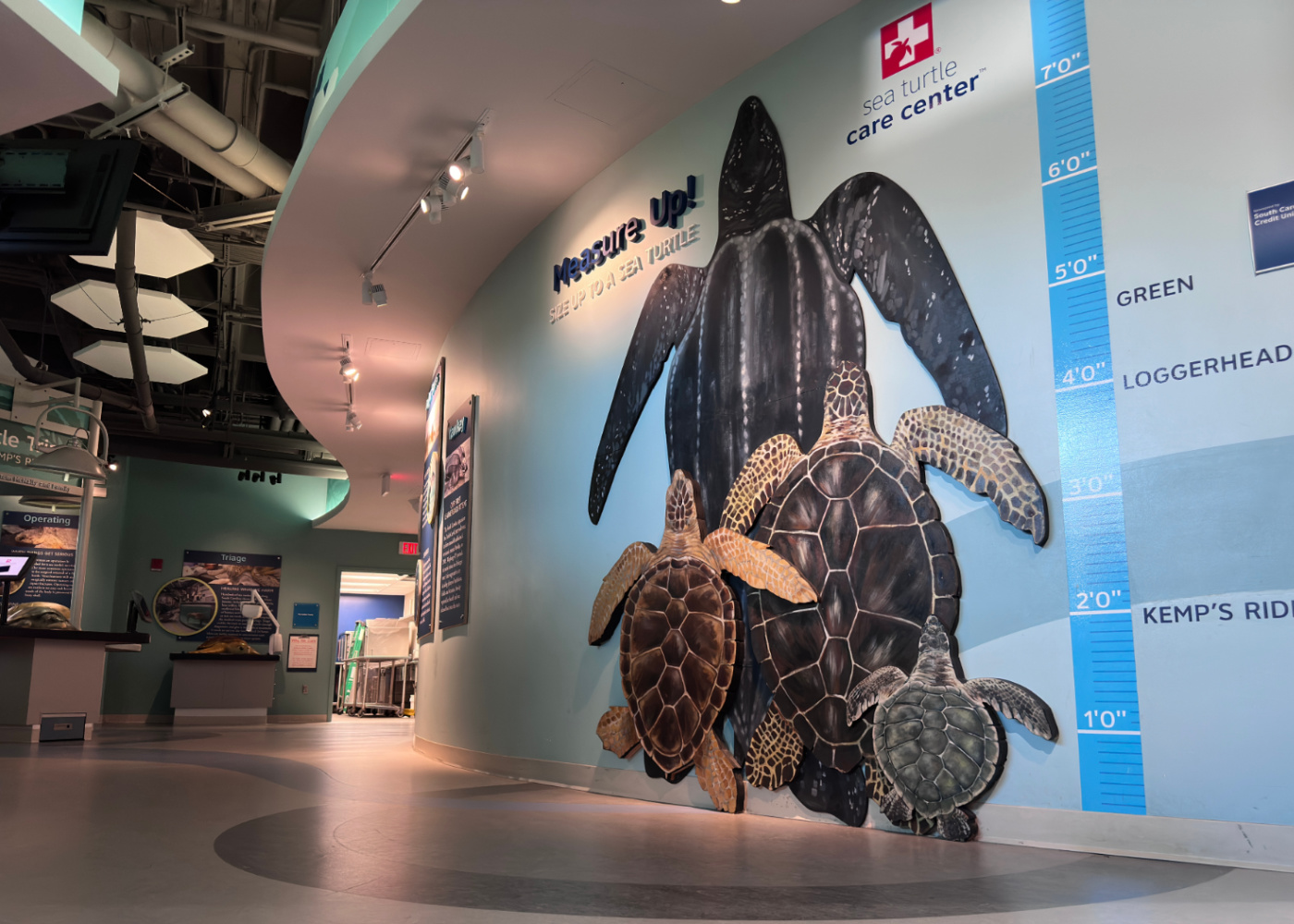Did you know there are seven sea turtle species found in the world? Luckily for us here in South Carolina, four of the seven sea turtle species are found in our local waters: loggerhead, green, Kemp’s ridley and leatherback. Though they look alike to the untrained eye, we challenge you to test your newfound knowledge as we begin admitting new patients for rehabilitation and spotting them out in the wild!
The State Reptile
South Carolinians love talking about loggerheads, and for good reason: they are our state reptile and the most common species to come ashore to nest on our coastlines! Loggerhead populations are considered threatened, so it is important to continue our efforts in protecting this species’ nests on our beaches every summer.
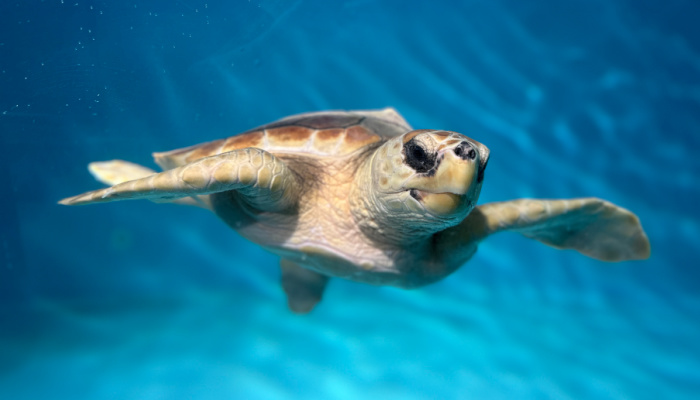 Loggerheads begin nesting when they are about 25 years old.
Loggerheads begin nesting when they are about 25 years old.Loggerhead sea turtles are distinguished by their large yellow-to-brown head that can resemble a log and a dense carapace (top shell). Their carapace ranges from yellow-orange to brown in color. They have a thick beak meant for crushing their preferred hard-shell prey, like blue crab and horseshoe crabs! Upon closer inspection, you can count the scutes (scales) on the top of their head between their eyes; loggerheads always have more than two!
The Smallest and Most Endangered
You know those cute little sea turtles that cold-stun in the New England area each year? The majority of these turtles that we help rehabilitate are usually Kemp’s ridley sea turtles, the most endangered species worldwide. They have faced decades of nesting habitat destruction, leading to their near extinction. Thanks to worldwide conservation efforts and support through the Association of Zoos and Aquariums Saving Animals From Extinction (AZA SAFE) sea turtle program, the Kemp’s ridley population has begun to bounce back in the recent years.
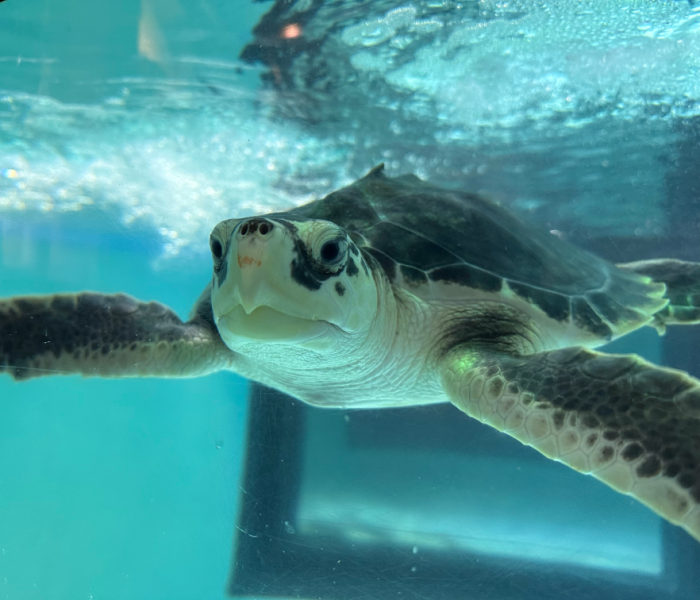 This distinct coloration is called "countershading."
This distinct coloration is called "countershading."Kemp’s ridleys are the smallest species of sea turtle, even as adults. Juveniles have a contrasting coloration with a light underside and dark topside, which helps camouflage them in the open ocean. As adults, the colors have shifted to an overall grey color. Kemp’s ridleys also have a hooked beak to capture small, hard-shelled prey. This species also has more than two scutes between their eyes.
The Photogenic One
If you close your eyes and imagine a sea turtle, chances are an image of a green sea turtle materialized in your mind. Greens tend to be the “poster child” for all sea turtle species and serve as the main interpretation for mass media portrayals. They inhabit the warm, shallow-water habitats along our coast (like our quintessential Lowcountry landscape, the saltmarsh) and they are the only species of sea turtle that consumes seagrasses.
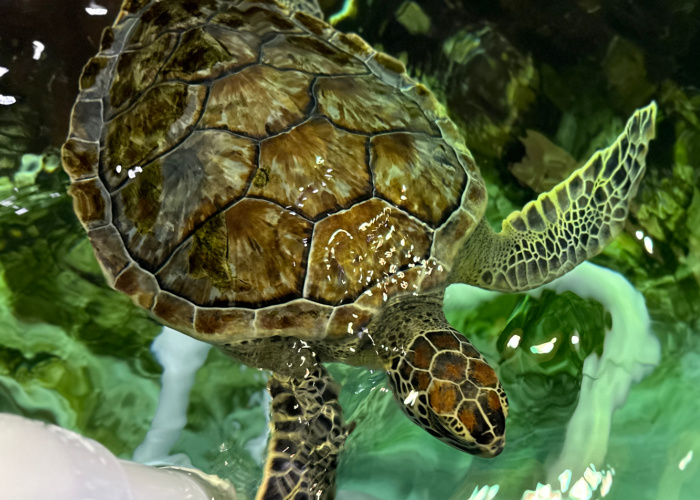 The starburst scute pattern is unique to green sea turtles.
The starburst scute pattern is unique to green sea turtles. Green sea turtles can be various shades of green and brown and display a stunning starburst pattern within each scute on their carapace. When you look closely, this species has exactly two scutes between their round, slightly cartoonish, eyes and small serrations on the beak on the lower jaw (an adaptation to help them tear apart that seagrass)!
The Gentle Giant
Leatherback sea turtles are the largest and most unique species of sea turtle alive today! With the help of their leathery shell — which can compress with the pressure of the water — they can dive to depths of 4,000 feet. Due to their pelagic and highly migratory lifestyle, it is difficult to research this species. With support from AZA SAFE’s sea turtle program, researchers and conservationists across the globe are working to protect this species.
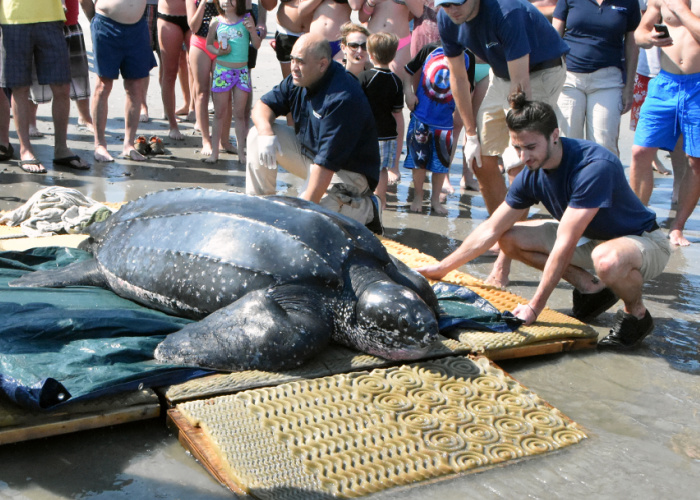 Leatherback sea turtles can weigh up to 1,500 pounds!
Leatherback sea turtles can weigh up to 1,500 pounds!Leatherbacks have no distinct scutes and are primarily black in coloration and mottled with white spots adorning their entire body. Though incredibly rare to see, juveniles are more spotted or striped with black and white coloring. Because leatherbacks primarily feast on jellies, they’ve adapted to have two fang-like projections on their top jaw to hold onto this slippery prey.
The One Who Can Make a Difference
Always be on the lookout for sea turtles when enjoying our local waters! Since we see sea turtles here year-round, being a safe boater, an informed fisherman, a respectful beachgoer and a committed conservationist means our flippered friends can consider South Carolina a safe harbor to call home. If you find a sea turtle in need, call the South Carolina Department of Natural Resources stranding hotline at 1 (800) 922-5431 to report the sick or injured animal.
Visit today to test your new species identification knowledge with the patients currently undergoing rehabilitation!
Published April 15, 2024


